It’s 5 a.m. The alarm clock rings. Outside it’s dark and there is no one on the street. On the previous day my fixer, Myako, told me that we needed to be at the entrance to the brewery around 5:45. That was the time the sake production would begin that year.
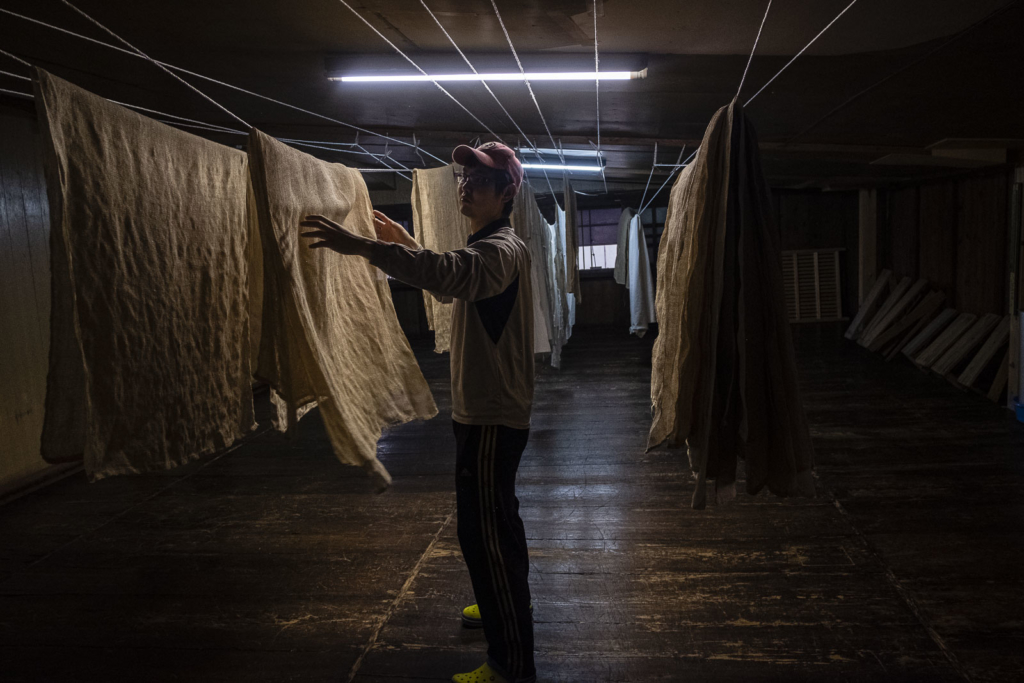
Some years ago I had watched the film ‘The Birth of Sake’. It documents a group of workers from a traditional brewery. It moved me so much that immediately I wanted some day to photograph the production process of that which is still Japan’s national drink.
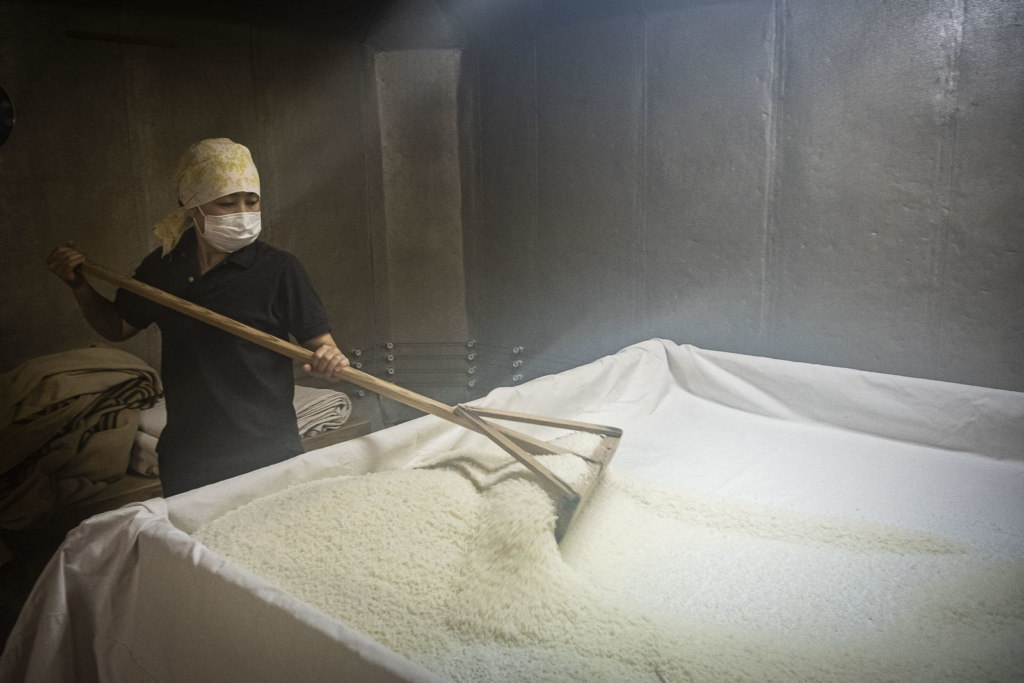
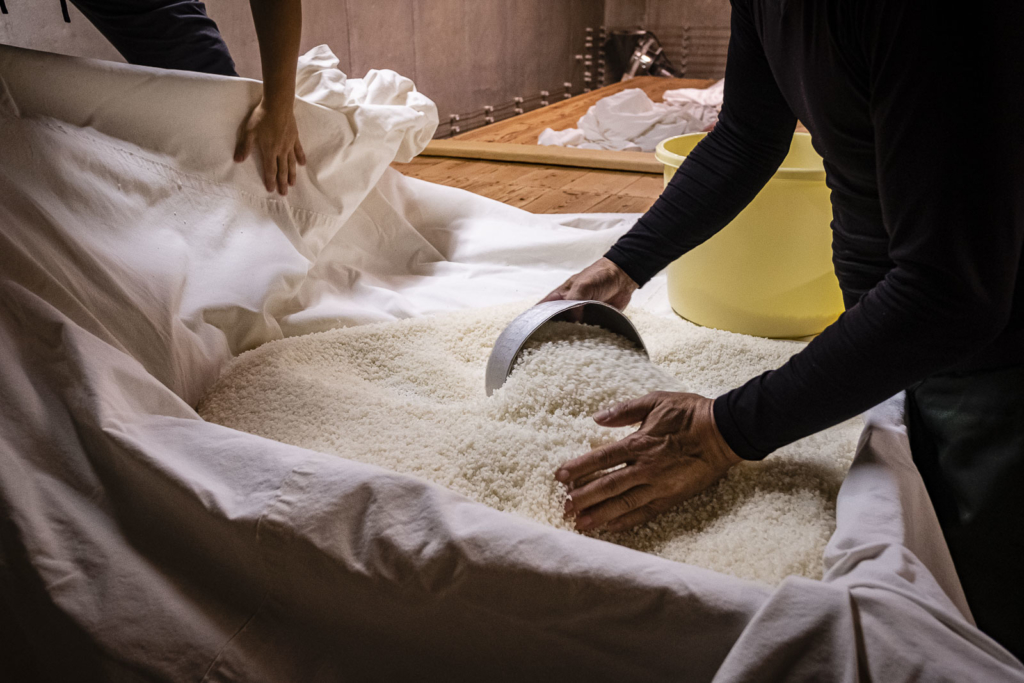
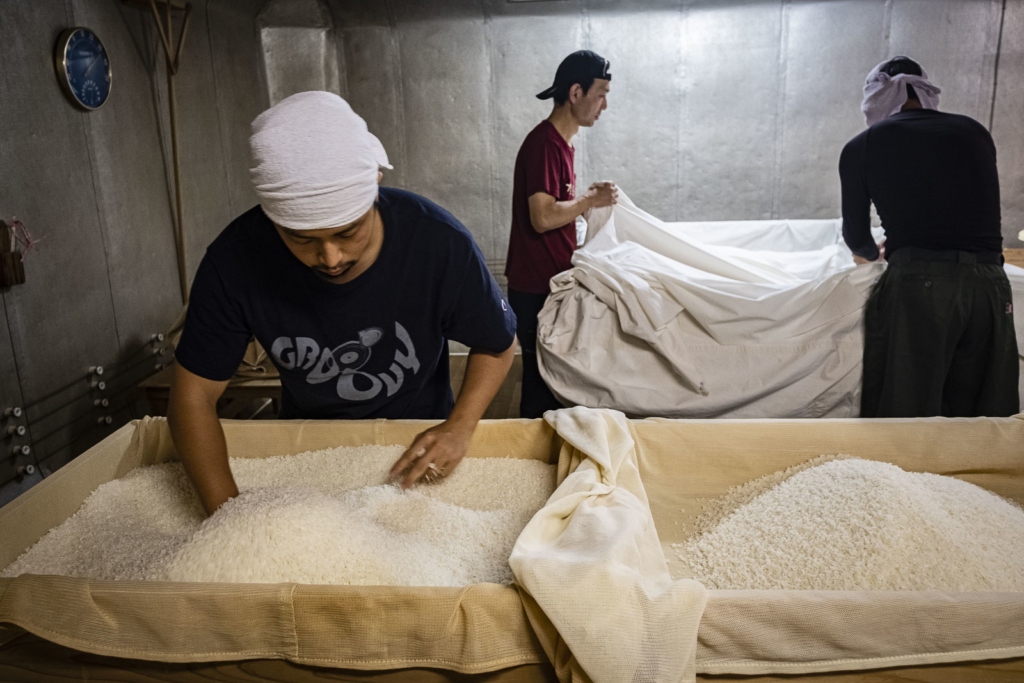
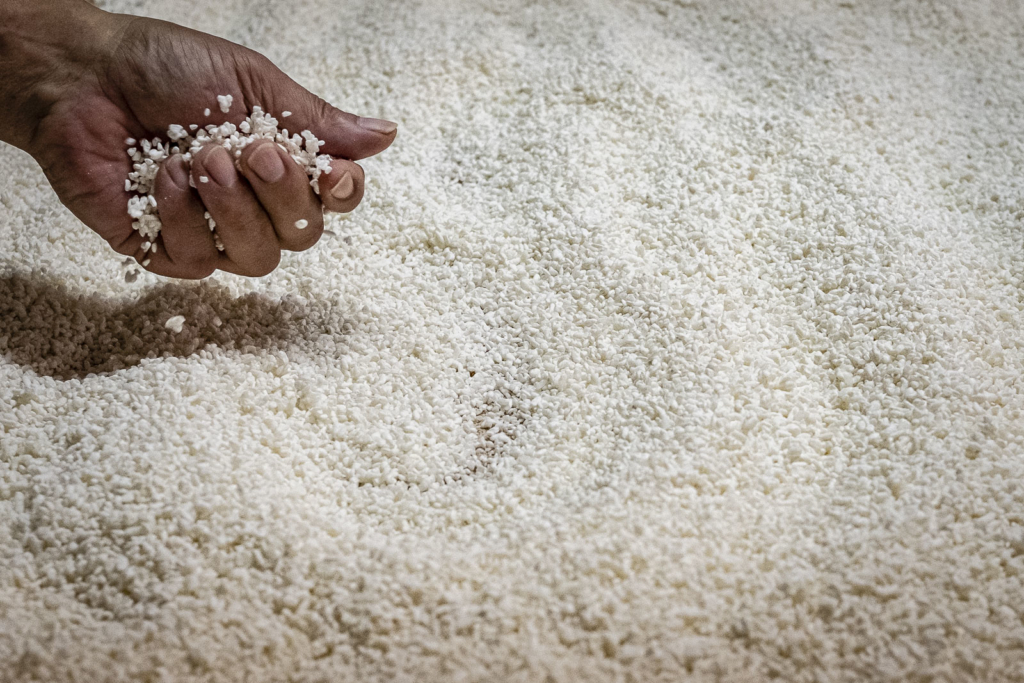
Years later the opportunity presented itself. This was how I found myself in a cold November dawn waiting at the door to the shop which serves as the entrance to Juji Asahi brewery, in Izumo, Shimane prefecture. When they are fully functioning, it’s easy to identify a sake brewery. Just look for the sugidama. This big cedar ball is hung at the entrance when the production period begins, in November. It stays there during the whole process, until March, marking a place that is producing sake.
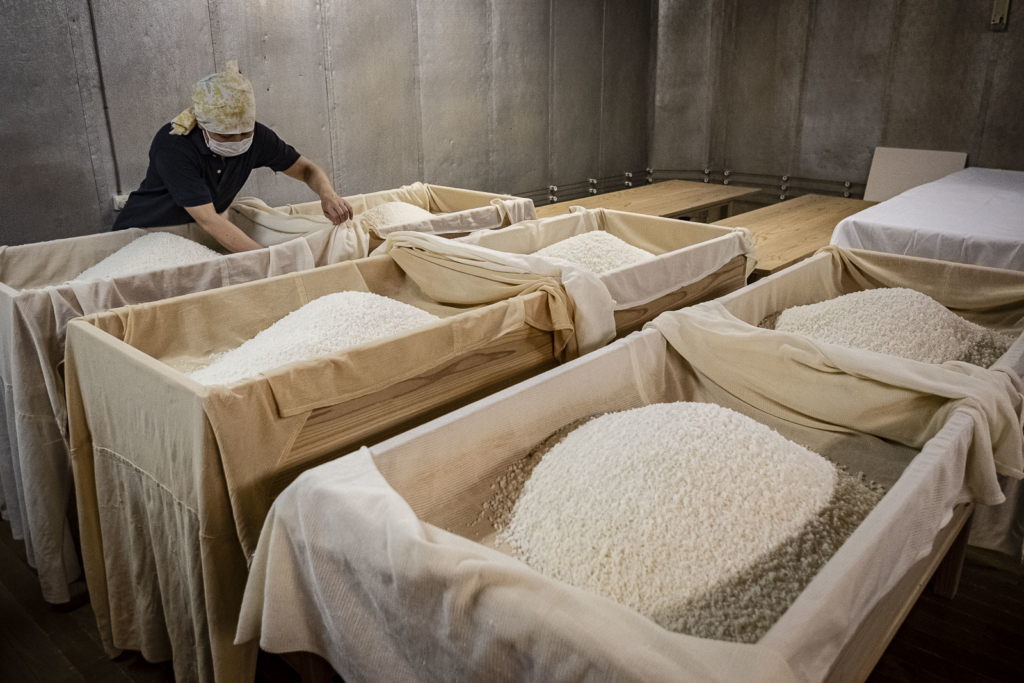
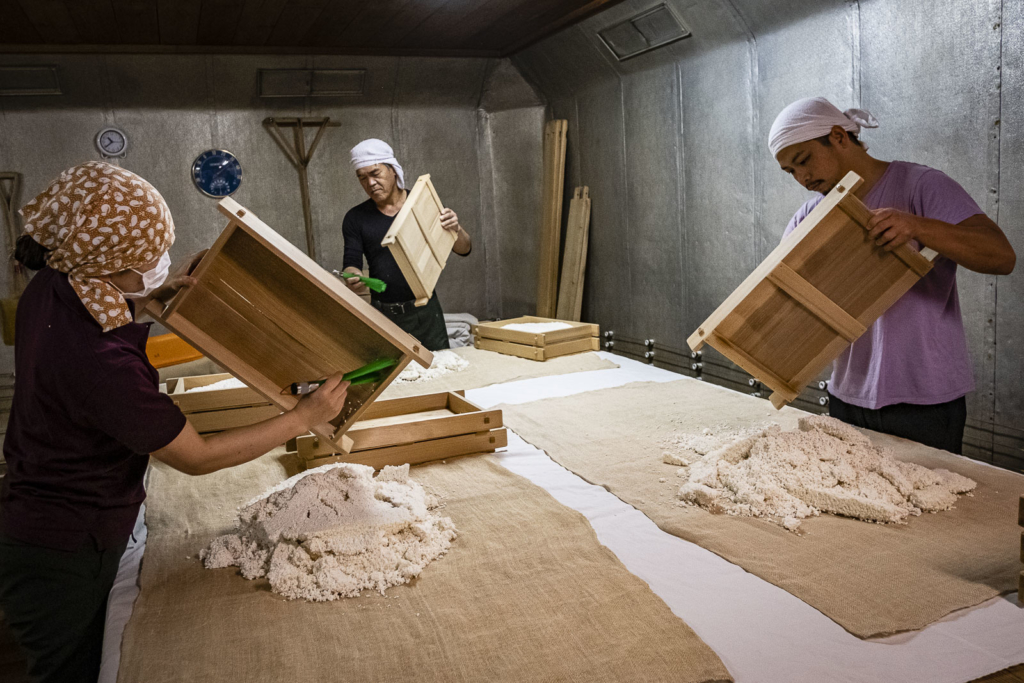
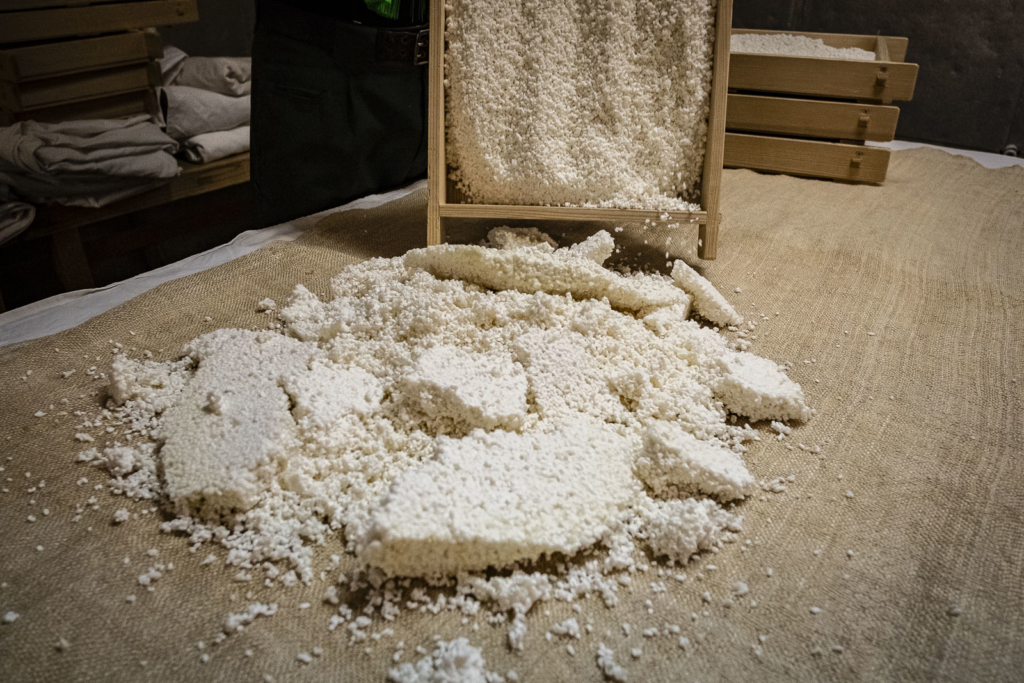
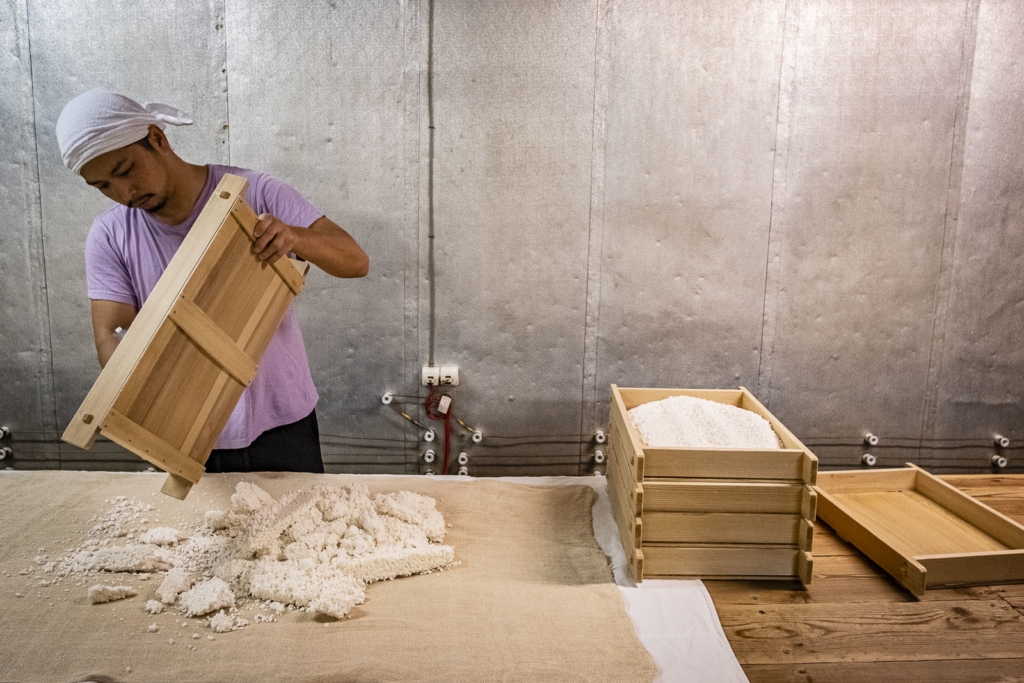
Eriko Terada, the person responsible for the brewery, gives us a warm welcome at the scheduled time. She then takes us to a temperature chamber where there are already four people working. There are several tasks that must be done when the rice is at a specific temperature.
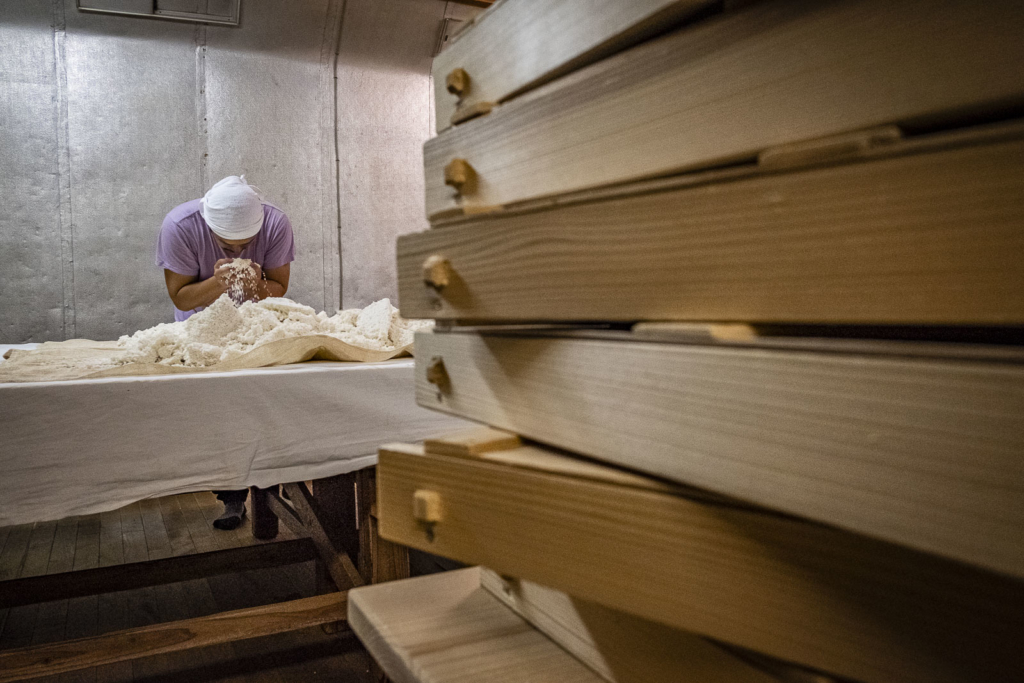
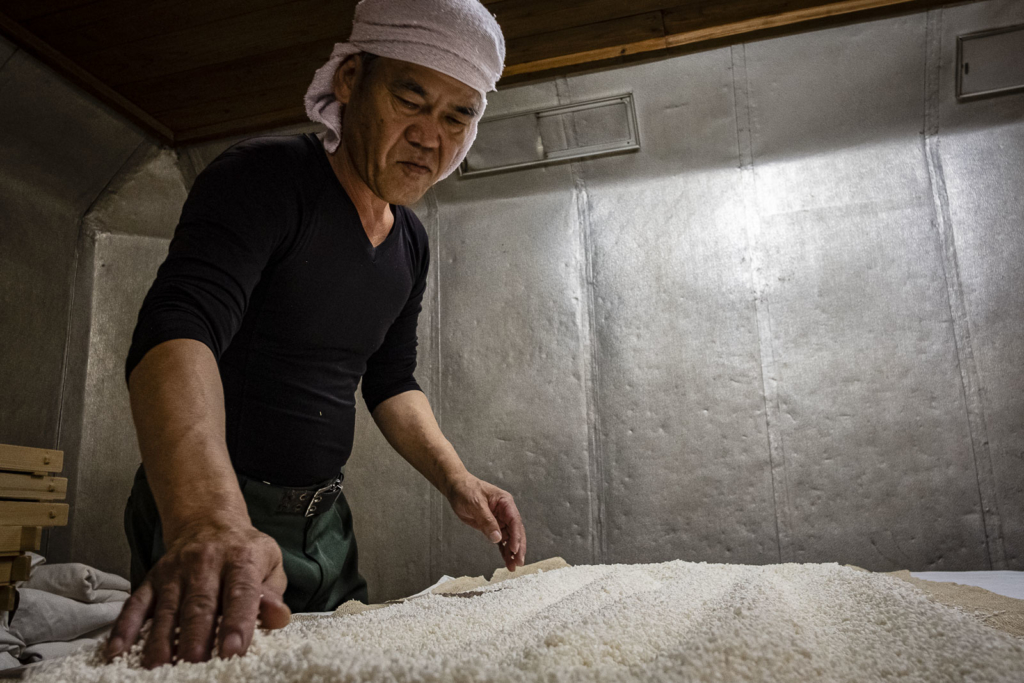
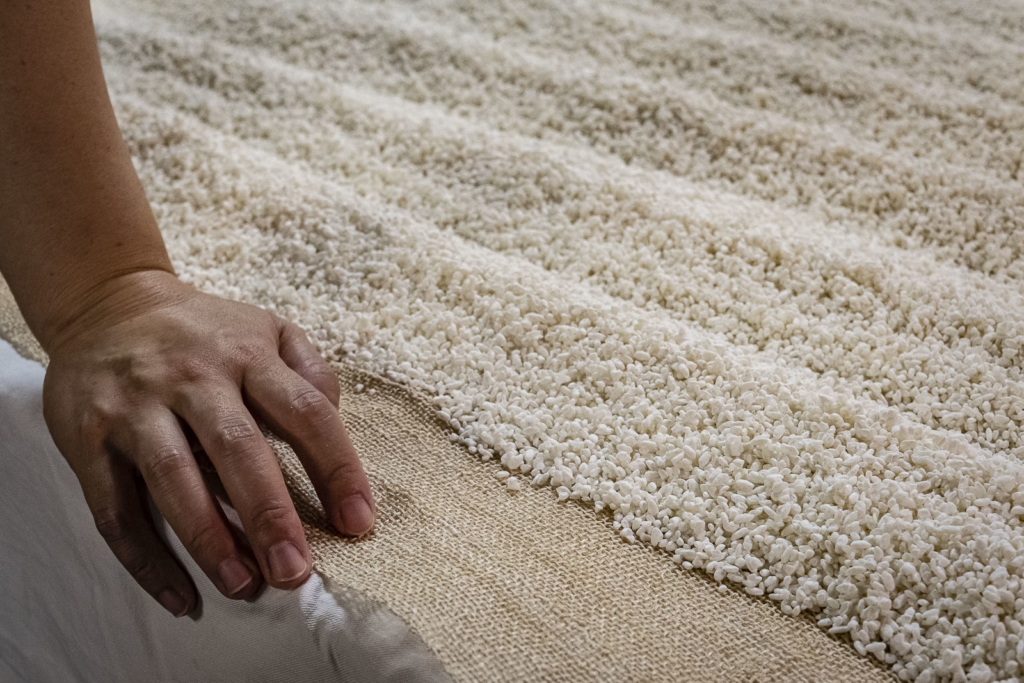
Going from 4 degrees in the street to almost 40 inside the chamber is a considerable thermal shock. Even my photographic gear complains. The camera’s sensor starts to show a strange hue on some of the photos. Condensation forms on the lenses. The camera itself starts heating to a point where I can barely hold it in my hands. At times I have to stop the session, losing some photographable moments, so that things go back to normal. I had already lost a camera in this trip due to a malfunction. I couldn’t risk losing the only one I had on backup.
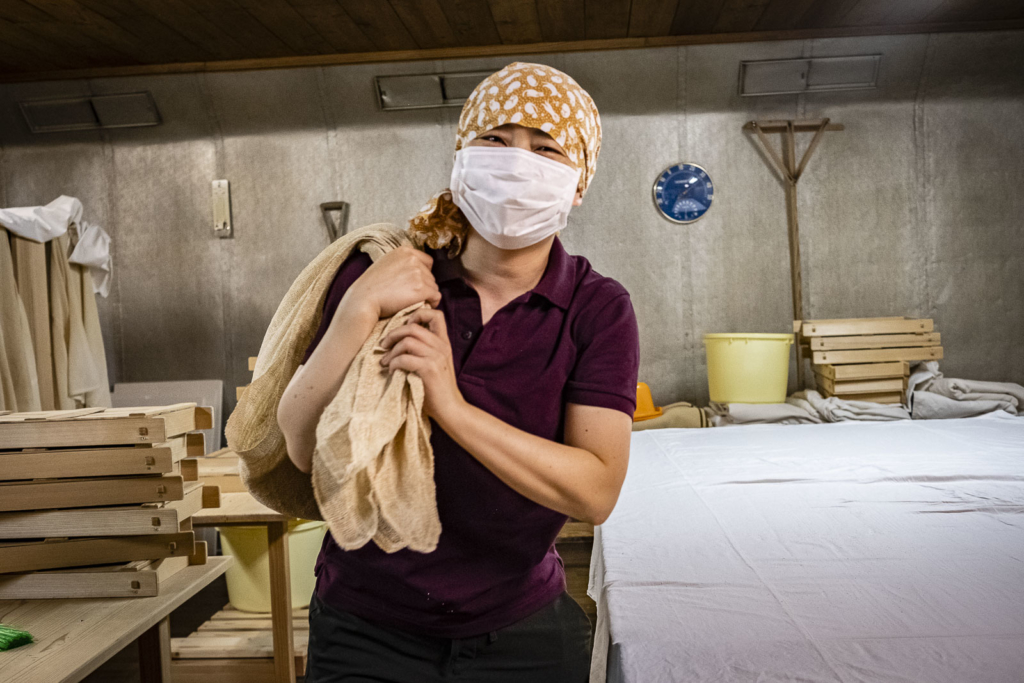
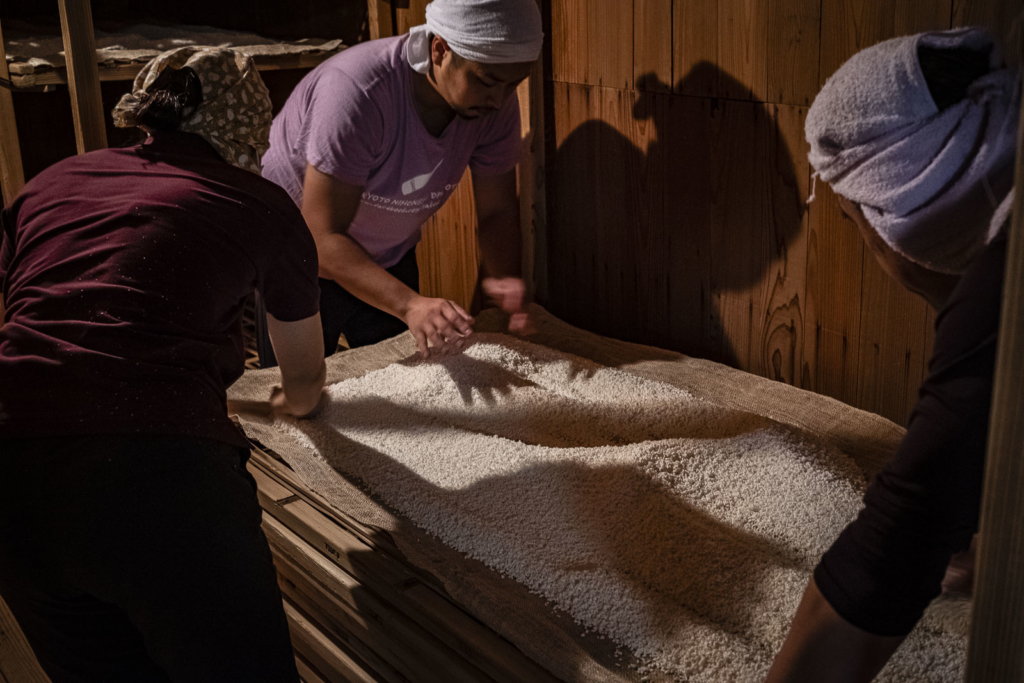
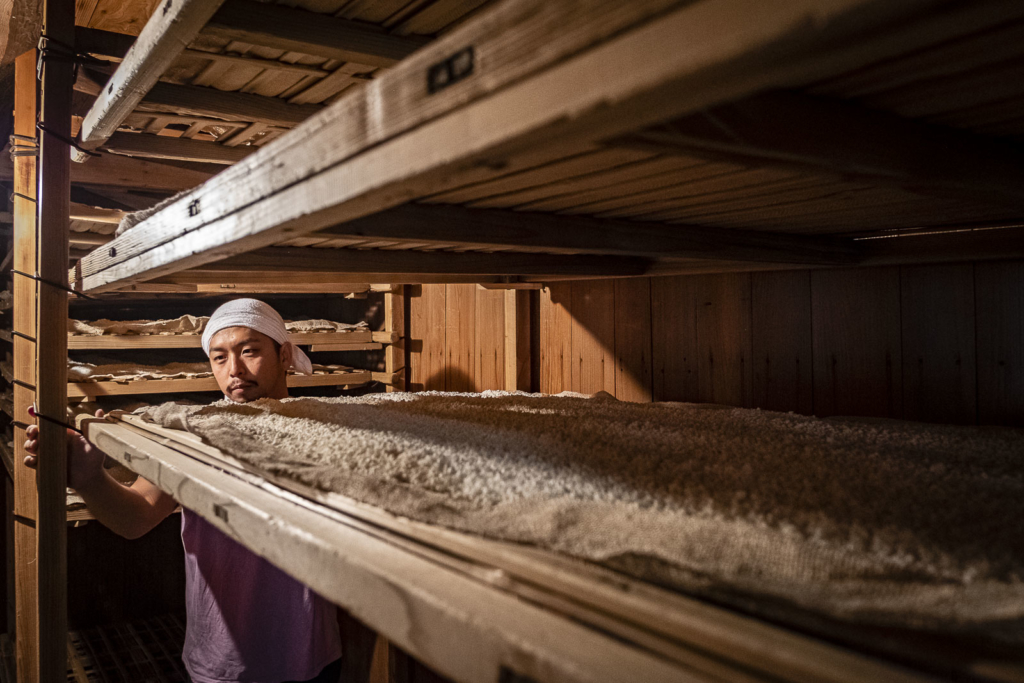
Juji Asahi brewery works mainly with local producers. Rice comes from fields in the mountains of Izumo and Okuizumo. The water, that should be as pure as possible, comes from the Kitayama mountain range, north of the city. In Japanese consciousness, Izumo has always had a deep connection to mythology. Here is the oldest known Shinto shrine in Japan, Izumo-taisha, which is over one thousand years old. Here, every Autumn, a festival takes place to welcome and honor Shinto Gods, as they return to Japan for a week. Maybe because of this connection, the Touji (the brewery’s master artisan responsible for guaranteeing the production of sake according to traditional methods) offers the first cooked rice ball of the year to a small Shinto shrine. A sort of thanks to the Gods for the quality of the ingredients they provide, and also a prayer so that this year’s production is successful.
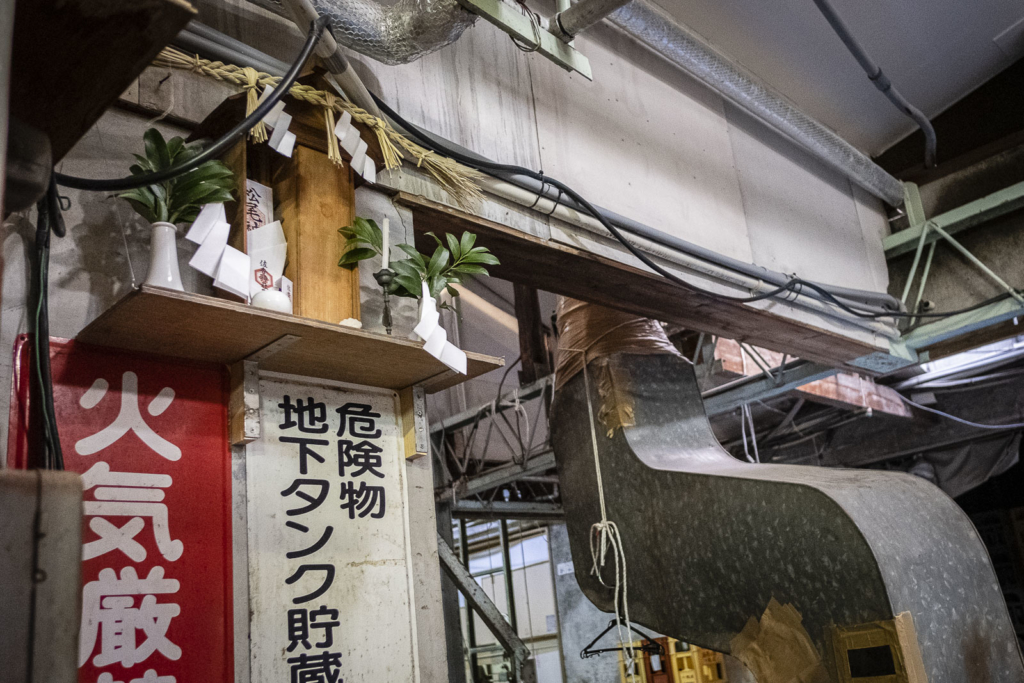
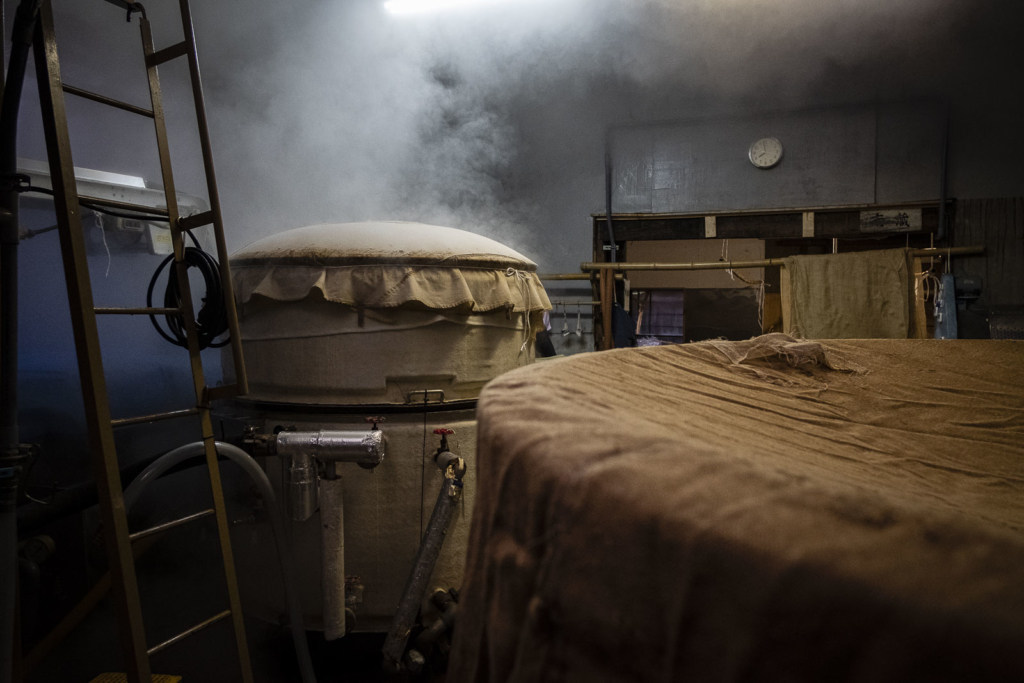
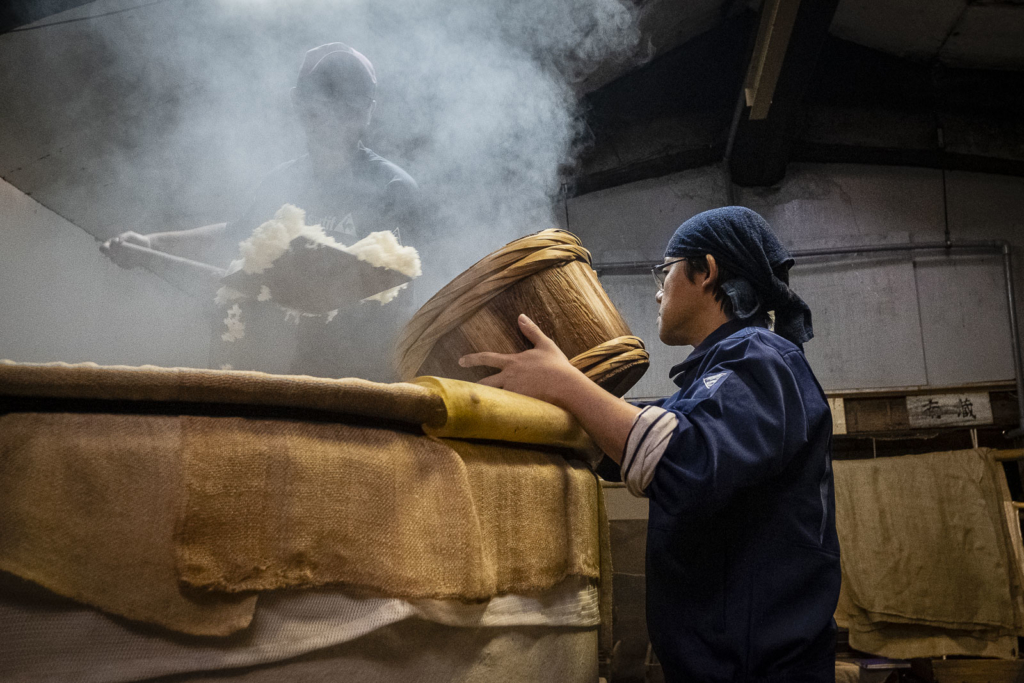
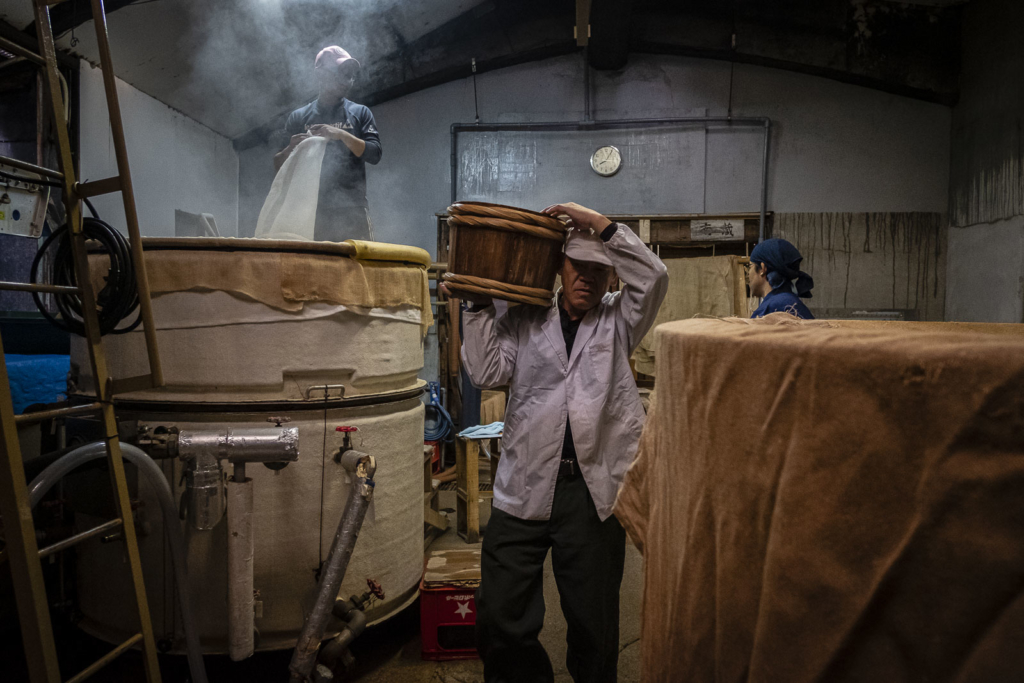
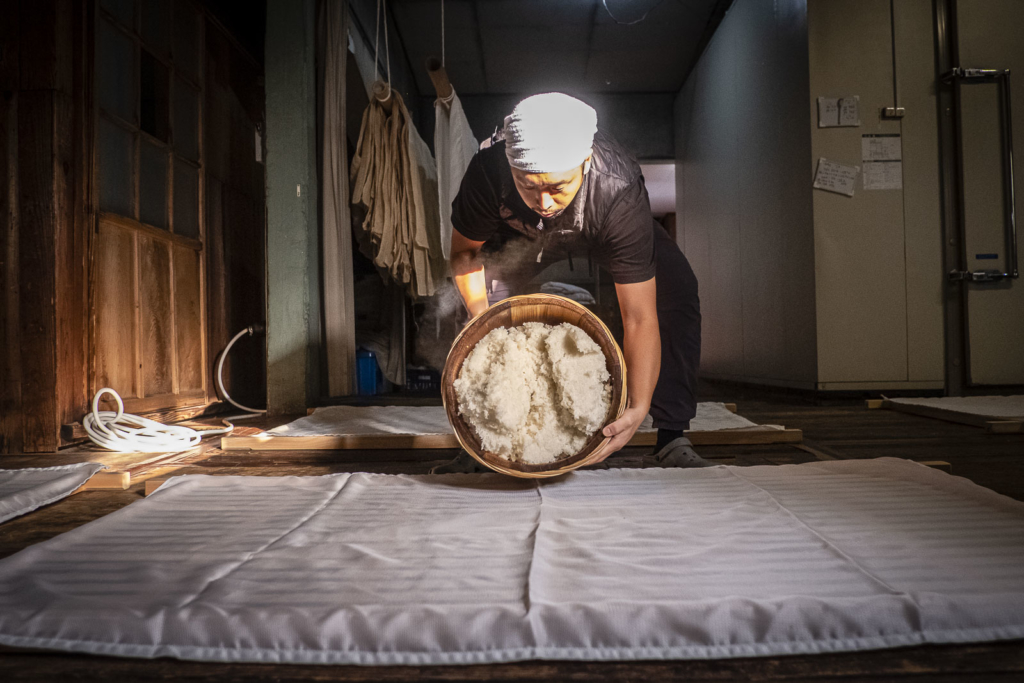
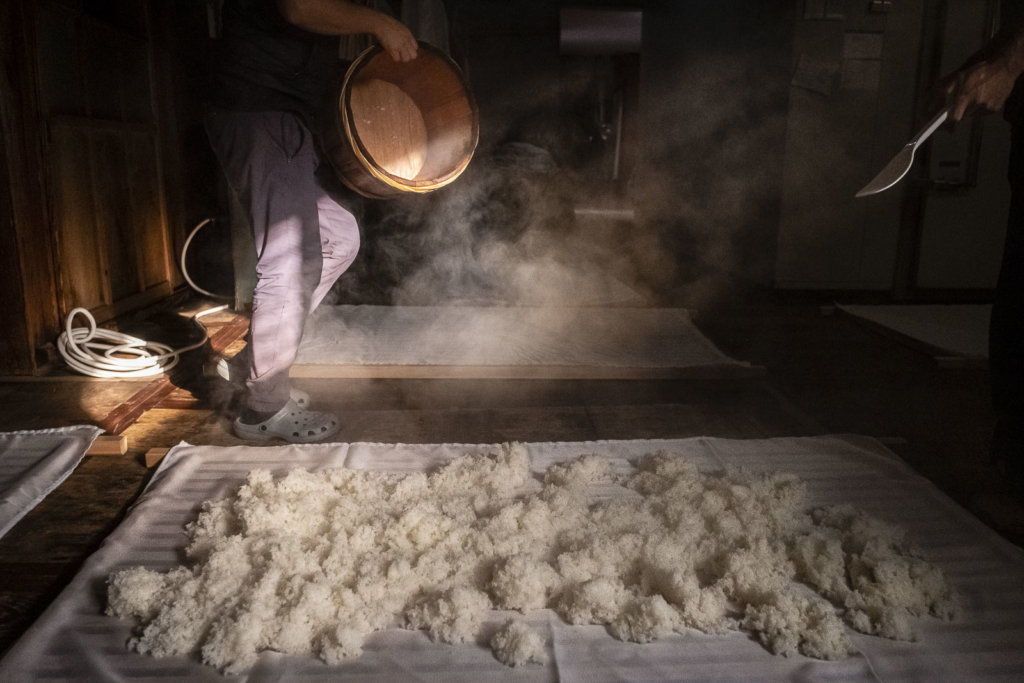
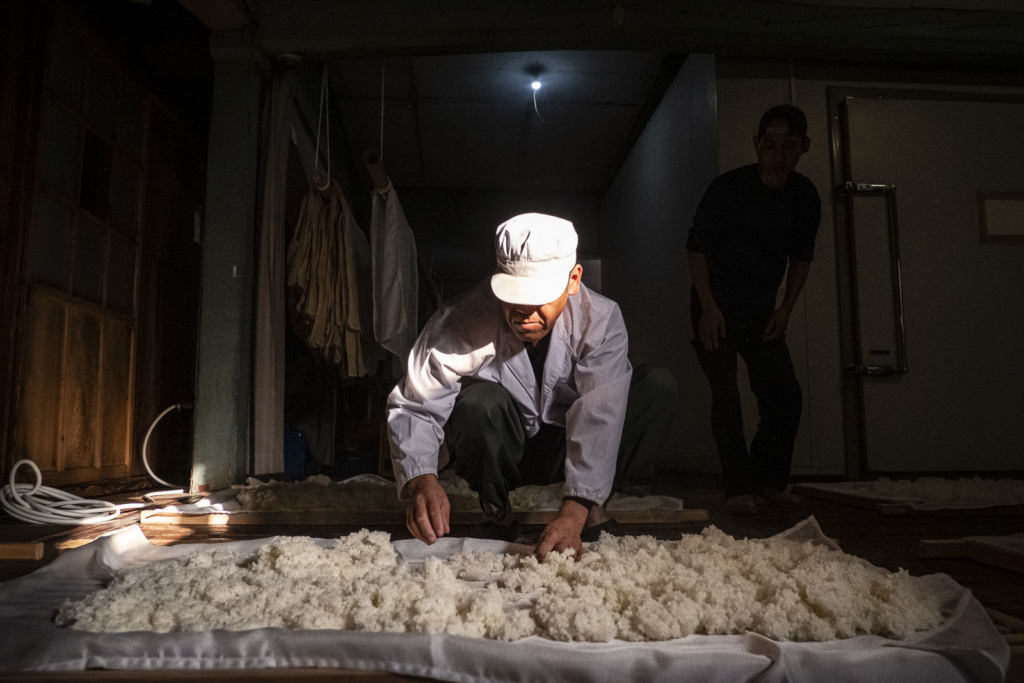
In the following two days, I visit the brewery more times in order to continue to photograph the process. It’s not enough time, but still I am able to observe some of the most important phases, like boiling rice in huge vats and applying koji. These are the spores of the fungus Aspergillus Oryzae, which are barely visible with a naked eye, yet are so important to start the fermentation process.
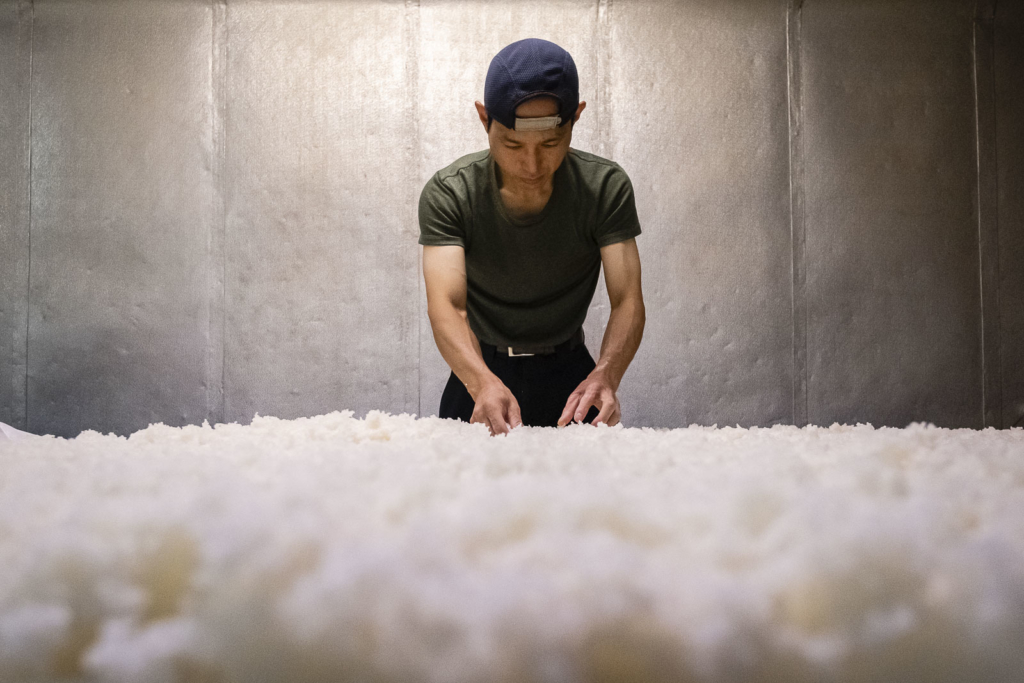
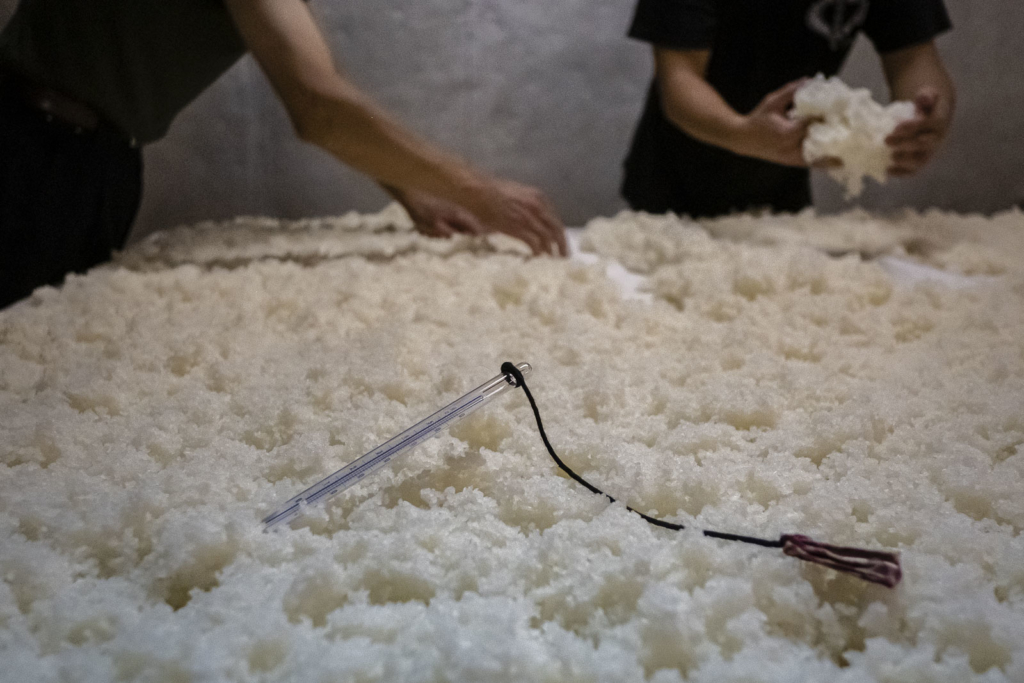
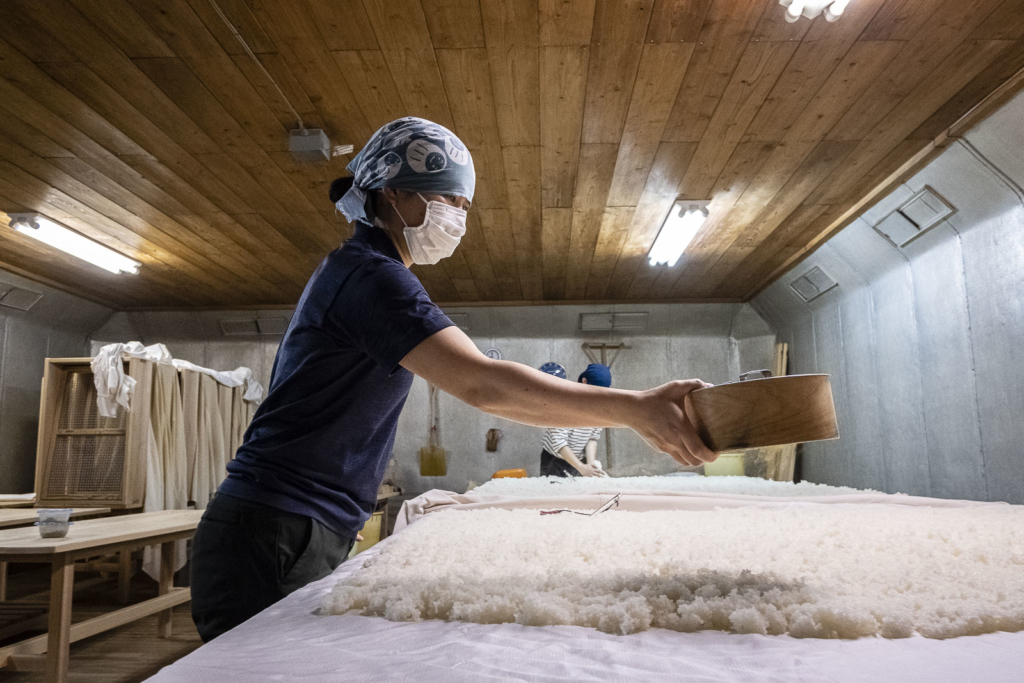
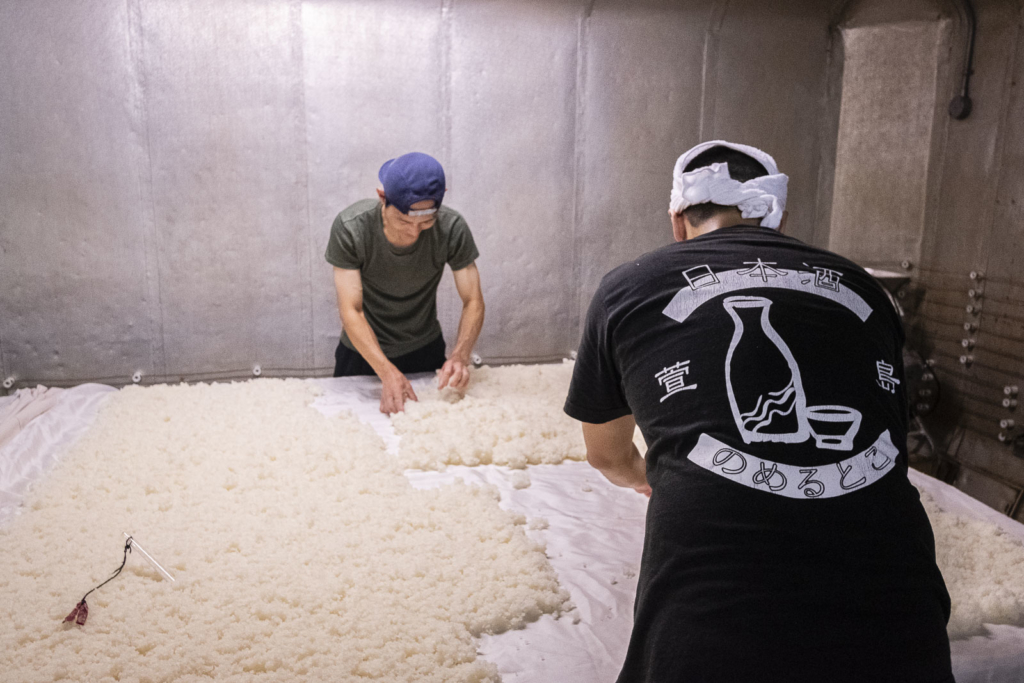
Three days is very little to photograph the production of sake in its entirety. Especially in November when the rice is being prepared for the first batch. In January it might be enough, because there are different batches going through different stages of the process. Anyway, I try to use the time as best as I can, and I hope one day I can return to document the process completely.

